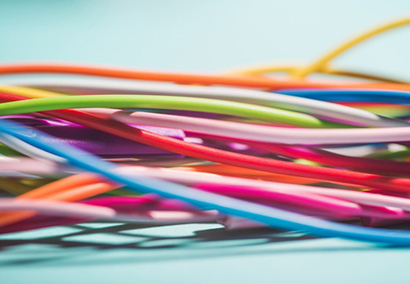Research demonstrates that a sense of social connection can improve learning. In fact, activities that bring students together — like peer tutoring and cooperative learning — have shown a marked increase of up to 75% greater performance on assessments. Teachers who support student-centered learning in this way often make a bigger impact on students’ lives and education than teachers who remain aloof or apart from their students.
A sense of separation from a teacher (and other students) can happen pretty easily in an online environment. It can take a special effort on the part of online teachers to become a “favorite teacher”. David Wiley noted that the impersonal nature of the web is not only easy to slip into, it is sometimes designed into the way LMSs direct pedagogy:
“With the pile of philosophical, conceptual, and empirical evidence showing the social nature of learning and the importance of human relationships (particularly the relationship between teacher and student) in learning and wellbeing, why are we working so hard to automate away any opportunity for these relationships to exist?”
But the truth is that there are a myriad of ways that teachers and students can create digital connections in online classes. A new paper from the Research and Education Department — “Increased Social Connectedness through Digital Peer Learning” — explores several ways that Canvas supports social learning, including:
Peer Tutoring
Reciprocal Teaching
Cooperative Learning
Via Gust MEES




 Your new post is loading...
Your new post is loading...








Research demonstrates that a sense of social connection can improve learning. In fact, activities that bring students together — like peer tutoring and cooperative learning — have shown a marked increase of up to 75% greater performance on assessments. Teachers who support student-centered learning in this way often make a bigger impact on students’ lives and education than teachers who remain aloof or apart from their students.
A sense of separation from a teacher (and other students) can happen pretty easily in an online environment. It can take a special effort on the part of online teachers to become a “favorite teacher”. David Wiley noted that the impersonal nature of the web is not only easy to slip into, it is sometimes designed into the way LMSs direct pedagogy:
“With the pile of philosophical, conceptual, and empirical evidence showing the social nature of learning and the importance of human relationships (particularly the relationship between teacher and student) in learning and wellbeing, why are we working so hard to automate away any opportunity for these relationships to exist?”
But the truth is that there are a myriad of ways that teachers and students can create digital connections in online classes. A new paper from the Research and Education Department — “Increased Social Connectedness through Digital Peer Learning” — explores several ways that Canvas supports social learning, including:
Peer Tutoring
Reciprocal Teaching
Cooperative Learning